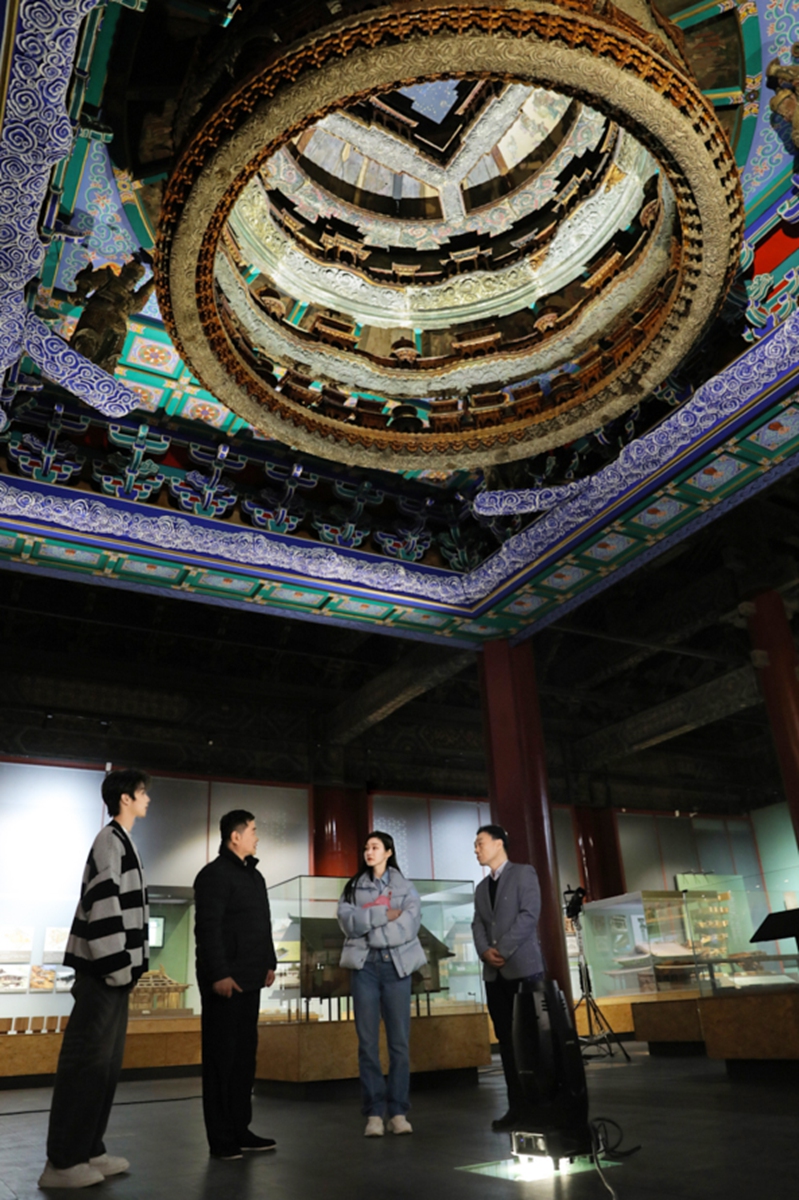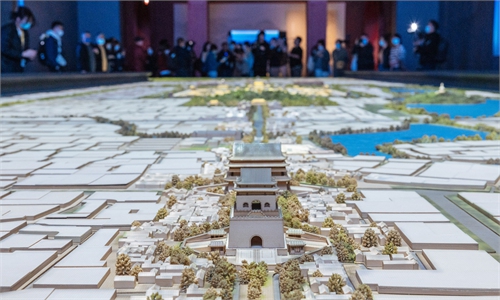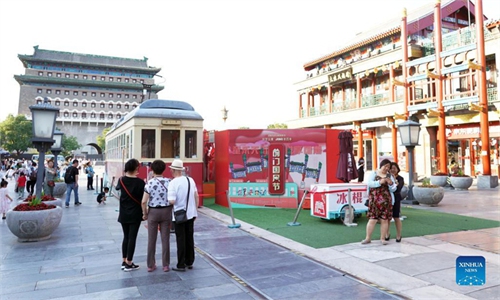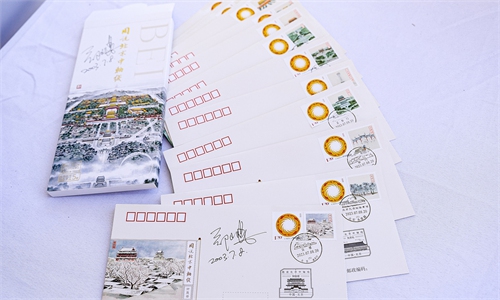ARTS / CULTURE & LEISURE
New show introduces Central Axis to young viewers

Photo: Courtesy of iQIYI
The essence of Beijing as an outstanding example of ancient China's capital really lies in its 7.8-kilometer-long Central Axis, which starts from the south of the city at Yongding Gate, runs across Zhengyang Gate, Tiananmen Square, the Forbidden City, Jingshan Hill, and ends at the Drum Tower and Bell Tower in the north.
The stories along the iconic Central Axis have made it a frequent topic in various shows and documentaries. Architecture, literature, gardens and more… each topic is so rich in content that it can form a collection of books.
A new show Glory is Back: Beijing, airing on Chinese streaming giant iQiyi, is paving its own way to view the capital's iconic Central Axis from the perspective of ordinary people, especially the younger generation.
"Being creative is always hard to do as the Central Axis has been filmed hundreds of times," He Jibing, producer of the Chinese cultural heritage series Glory is Back, told the Global Times in an exclusive interview on Tuesday.
The key lies in "introducing the unfamiliar among the familiar" as new models and interesting content are what the general public, especially Generation Z, expects to see on screen.
"It has been challenging but meaningful," said He, who has produced a number of popular and quality programs with the team. The Central Axis is "tangible as it has so many buildings and landmarks and also intangible as it is full of Chinese wisdom, culture and spirits."
The core theme of a "Time-travel Train" has been introduced to connect people from different times and expand the stories, express the beauty of Chinese culture and reflect Chinese-style modernization. With Shan Jixiang, former director of the Palace Museum, as a core figure, the show also involves many popular actors and stars.
"The selection is not random but carefully arranged. Their own stories are closely connected with the Beijing Central Axis," added He.
From the perspective of time, the program divides the 700-year-old history of the Central Axis into different time periods like the Yuan (1279-1368), Ming (1368-1644), Qing (1644-1911) dynasties.
The program deciphers the aesthetics hidden in the Central Axis through the five traditional Chinese colors, each of which has extremely rich connotations, such as red's association with good fortune, yellow that breeds the courage and romance in Chinese blood, and the elegant blue that represents the visual symbol of "the unity of man and nature."
Through introductions by Shan, the hidden meanings of the different colors of buildings along the Central Axis are revealed one by one, allowing people to have a deeper understanding of traditional Chinese culture.
The show also explores historical stories such as the initial determination of the original Central Axis in the capital of the Yuan Dynasty by Liu Bingzhong, and integrating topics like the Forbidden City in innovative ways such as the use of virtual technology.
The show isn't just limited to the history of the Central Axis, but also how young people view it and make use of it as an innovative IP, such as a digital version of the Forbidden City created by young artist Su Yijun.
The young Post-1995 man led a team of 100 people to complete a 1:1 replica of the Forbidden City in the virtual world after three years of on-site visits and referencing tons of ancient books and video materials. The structure and layout of the 720,000 square meters of courtyards, 1,200 ancient buildings, and 9,371 houses, and even the furnishings in each hall, have all been restored in a virtual world.
Such a unique method breaks through the boundary between the virtual and reality, and connects the past and the present along the Central Axis. It is not only interesting and simple, but also allows the audience to further feel the profound heritage of traditional culture, and establish and strengthen true cultural confidence.
After winning applause for his programs focusing on Dunhuang and Luoyang, He said that he is now setting his sights on the Grand Canal and the Silk Road.




